Have you ever thought about water in Scripture? Probably not, I’d bet. Water is a commonplace in our lives. All we have to do to get some is to turn on a faucet, so we’re likely to forget how important it is.
But in the arid, parched world in which the Bible was written, things were very different. In the Middle East water was seen as a giver of life – and a very undependable one at that. In the world of our spiritual forefathers the importance of water can hardly be overestimated.
So images of water in its life-saving and sometimes in its destructive capacity are common in Scripture. And these references are rich in meaning.
As we take a look at a few references, remember that we often have to understand water images in scripture metaphorically, such as when the Book of Revelation speaks of the “river of life-giving water, sparkling like crystal, flowing from the Throne of God and of the Lamb” (Revelation 22:1) as the source of all life in heaven.
But there is one constant: the natural element of water in the Bible virtually always signifies the spiritual gift of grace, its blessing, its joy, and its power:
- Water is life: God creates water as His first act of earthly creation (Genesis 1:6);
- Water is God’s power and justice: think of the Egyptians being drowned in the Red Sea (Exodus 14:23-31);
- Water is purification: in addition to Baptism, Blood and water flows from the side of Christ (John 19:34), which the Church has always understood as the source of sacramental life of the Church.
These are just some of many water references in Scripture, of course.
Watersheds and Waterfalls
Although there are few allusions to waterfalls in scripture, the one in Psalm 42:7 is probably the clearest: “Deep calls to deep in the roar of your waterfalls; all your waves and breakers have swept over me.” It is reminiscent of other spiritual “watershed” experiences like St. Paul’s conversion or the outpouring of the Holy Spirit on the day of Pentecost. There are times when spiritual waterfalls flow into our world too.
 Think for a moment of a cascade of grace. Try to imagine what a good metaphor drawn from the physical world might be. For me nothing symbolizes it better than the breathtaking beauty and power of our world’s largest waterfall: the Iguazú Falls in South America.
Think for a moment of a cascade of grace. Try to imagine what a good metaphor drawn from the physical world might be. For me nothing symbolizes it better than the breathtaking beauty and power of our world’s largest waterfall: the Iguazú Falls in South America.
They are so overwhelming that even Hollywood, at times, has used them as a natural image of overflowing grace. No one who watches the 1986 movie, The Mission, for example, can forget the waterfall. The cinematography is spectacular not only for scene of the priest who climbs 200 feet up the jagged rocks next to the falls to get to his mission at the top, but mostly because the Iguazú Falls themselves are simply awe-inspiring in their scope and beauty.
(I’ve placed a clip of the rock climbing scene below together with some spectacular BBC drone footage of the Falls. Both clips are short, and I hope you will watch them and bask in the amazing beauty.)
An Immense System
It is better to speak of the Iguazú Falls as a waterfall system rather than as a single waterfall, however. The system is so massive that it forms the junction where the borders of Argentina, Brazil, and Paraguay meet.
 The water flowing over the main cataracts plunges into a huge gash in the earth, a canyon called the “Devil’s Tongue” (ugh) separating Argentina from Brazil. That canyon is 300 feet wide, 250 feet deep, and approximately a quarter mile in length. Check out an aerial view of the Devil’s Tongue, followed by a gallery of several more photos of the Falls.
The water flowing over the main cataracts plunges into a huge gash in the earth, a canyon called the “Devil’s Tongue” (ugh) separating Argentina from Brazil. That canyon is 300 feet wide, 250 feet deep, and approximately a quarter mile in length. Check out an aerial view of the Devil’s Tongue, followed by a gallery of several more photos of the Falls.
[If you’d like to see a full Gallery of Iguazú Falls photos, go to this Wikimedia page.]
As I said, just spectacular.
A few quick statistics while you feast your eyes on this amazing beauty:
- Iguazú has two main levels like steps in the earth that only a giant could walk: the first drop (seen most clearly in the rainbow picture above) descends one huge step from the riverbed 100 feet down to a layer of basalt rock;
- From there the river cascades another 100+ feet over the next step emptying into the canyon below; not all of the waterfalls are stepped, though; some of them are straight drops from 260 feet;
- As the Iguazú River courses south, it forms the border between Argentina and Brazil and flows around hundreds of small and large islands in the stream;
- In terms of sheer size, there are 275 separate cataracts (sometimes called “jumps”) in the overall system, which spans 1.7 miles.
Comparisons
To give a sense of perspective about its size, it might be helpful to compare it to a much more familiar waterfall, one that many of our readers may have seen with their own eyes. Our beloved Niagara Falls forms the border between just two, not three, nations; it has just four cataracts; and falls “only” 167 feet to the river below.
There is a story that when Eleanor Roosevelt first laid her eyes on the colossal Iguazú wonder, she exclaimed, “My poor Niagara!” meaning she felt that Niagara was paltry in comparison! (I don’t happen to agree with that sentiment, but it was her spontaneous reaction to the glory of the Iguazú phenomenon.)
A better comparison may be to the Victoria Falls that forms the border between Zimbabwe and Zambia. Victoria is the highest waterfall in the world registering a full 360 feet in its drop, but it only has five cataracts and spans just over a mile in width.
Yet, while Iguazú and Victoria beat Niagara in certain metrics, Niagara vanquishes them in terms of sheer power. Niagara is a water beast: its normal flow rate is 85,000 cubic feet of water per second compared to Iguazú’s 61,600 cu. ft./sec. and Victoria’s measly 38,430. Tsk, tsk.
Really, though, comparing waterfalls is like comparing apples and oranges. The brute statistics may rank the size of their various attributes, but these blessings we call waterfalls are multifaceted realities of nature and defy any real comparison with each other. They are like people who may share many common attributes, yet each human being is sui generis.
But we don’t just evaluate natural phenomena in terms of size, do we? Beauty matters most for nature lovers. Each and every one of these natural wonders takes our breath away with its unique and unrepeatable beauty. They are God’s craftsmanship and in every way sacred windows to the Divine Artist.

History
The Spanish explorer, Alvar Nuñez Cabeza de Vaca, “discovered” the Falls in 1541 on an exploratory mission from Paraguay’s capital, Asunción. He actually named them for the Virgin Mary, not the devil! He called them the “Saltos de Santa María” or the “Jumps (an older Spanish word for waterfalls) of Holy Mary.” He was unaware that the Falls already had a name given by the indigenous Guarani Indians, something that was perfectly simple: yguazu, which literally meant “big water”.
Imagine coming upon that scene for the first time. The thunderous sound of the cascading water alone would have been overwhelming!
Iguazú Falls’ popularity conveys the sense of wonder people feel when they first catch sight of the natural marvel. It is the second most popular tourist site in Latin America after Macchu Pichu in Peru, and no fewer than twenty-five feature length movies dating back to 1907 have used the Iguazú Falls as backdrops to their action. (This Wikipedia entry contains the full list at the bottom of the article.)
A Cinematic Wonder
I find it particularly interesting that a couple of recent Marvel Comics movies (Captain America and Black Panther) featured the Falls as recently as a few years ago, but then again, it shouldn’t be surprising that movie-makers love this scenery. They need dramatic beauty to create emotional effect, and Iguazu doesn’t disappoint.
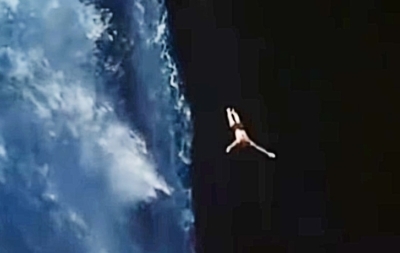
As I noted above, the most incredible portrayal of the Iguazú Falls, however, can be found in the movie, The Mission. It was directed by Roland Joffé and had some big stars – Robert DeNiro, Jeremy Irons, and Liam Neeson, among others. The musical score by Ennio Moricone is an immortal classic. It was a movie that found director, actors, and musicians all at the peaks of their careers.
The scene that features a priest climbing the Falls to get to his mission is certainly spectacular, but that is not even the best scene. The opening of the movie is the most dramatic of all. It shows Guaraní Indians who have rejected Christianity tying a missionary to a large cross and shoving him into the river which courses through the rough rocks like a whitewater raft, eventually casting him, as a living crucifix, over the cataracts and into a watery grave below.
For all its faults, Hollywood has never done better than that.
The Mission: Rock Climbing Scene
Fabulous DRONE footage BBC Nature (1:58)
———-
Deepest gratitude to John Collins for his invaluable assistance on this article. Images courtesy of Wikimedia Commons.
[Note: This article is a reproduction of the Sacred Windows Email Newsletter of 9/4/22, so it does not end with the regular Soul Work section. Please visit our Newsletter Archives.]
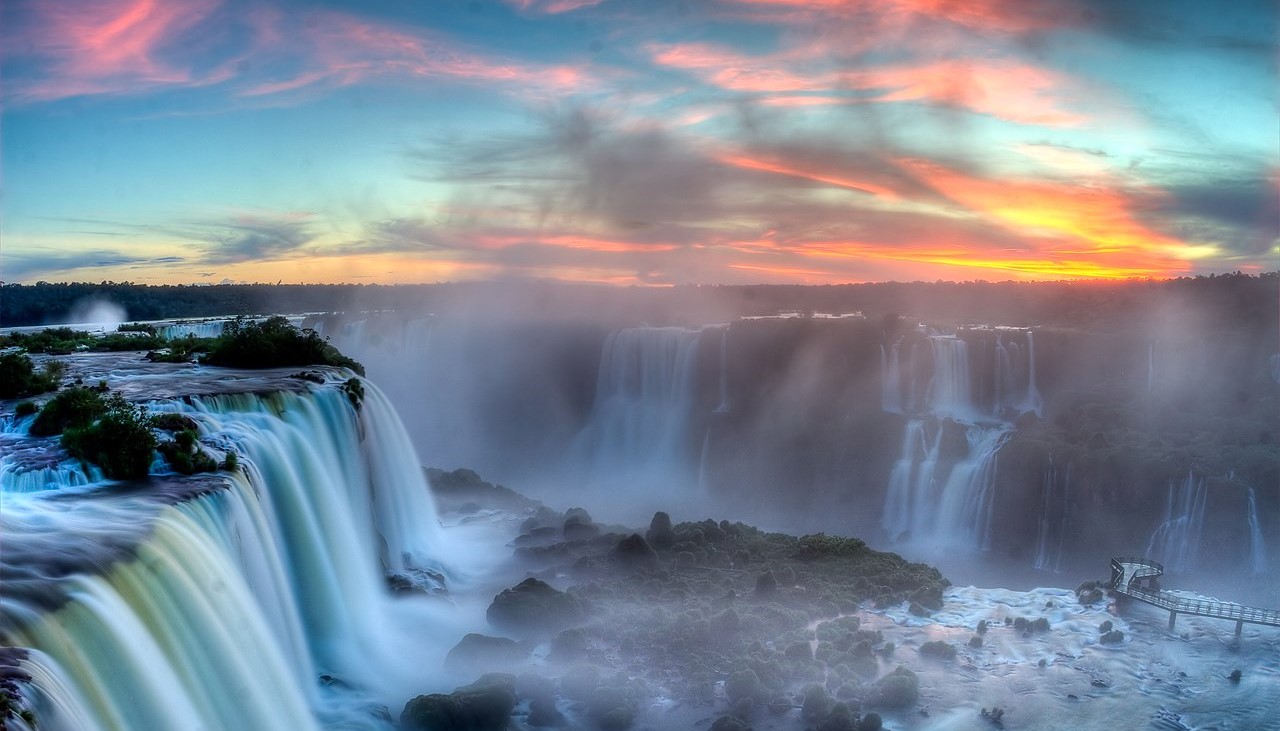
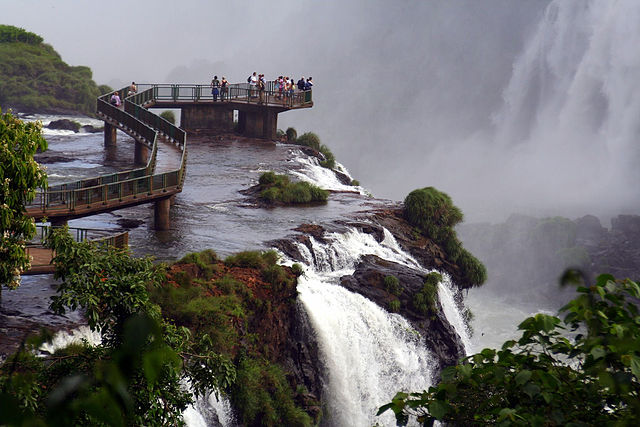



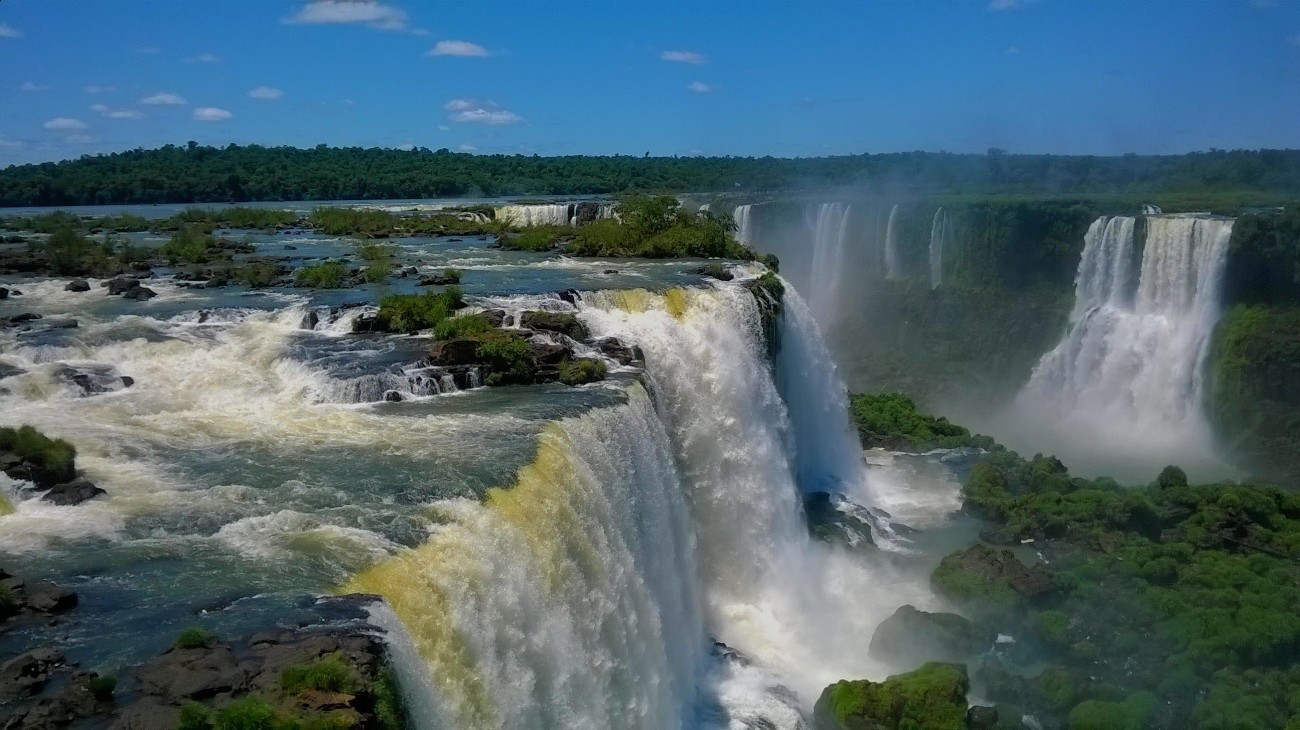

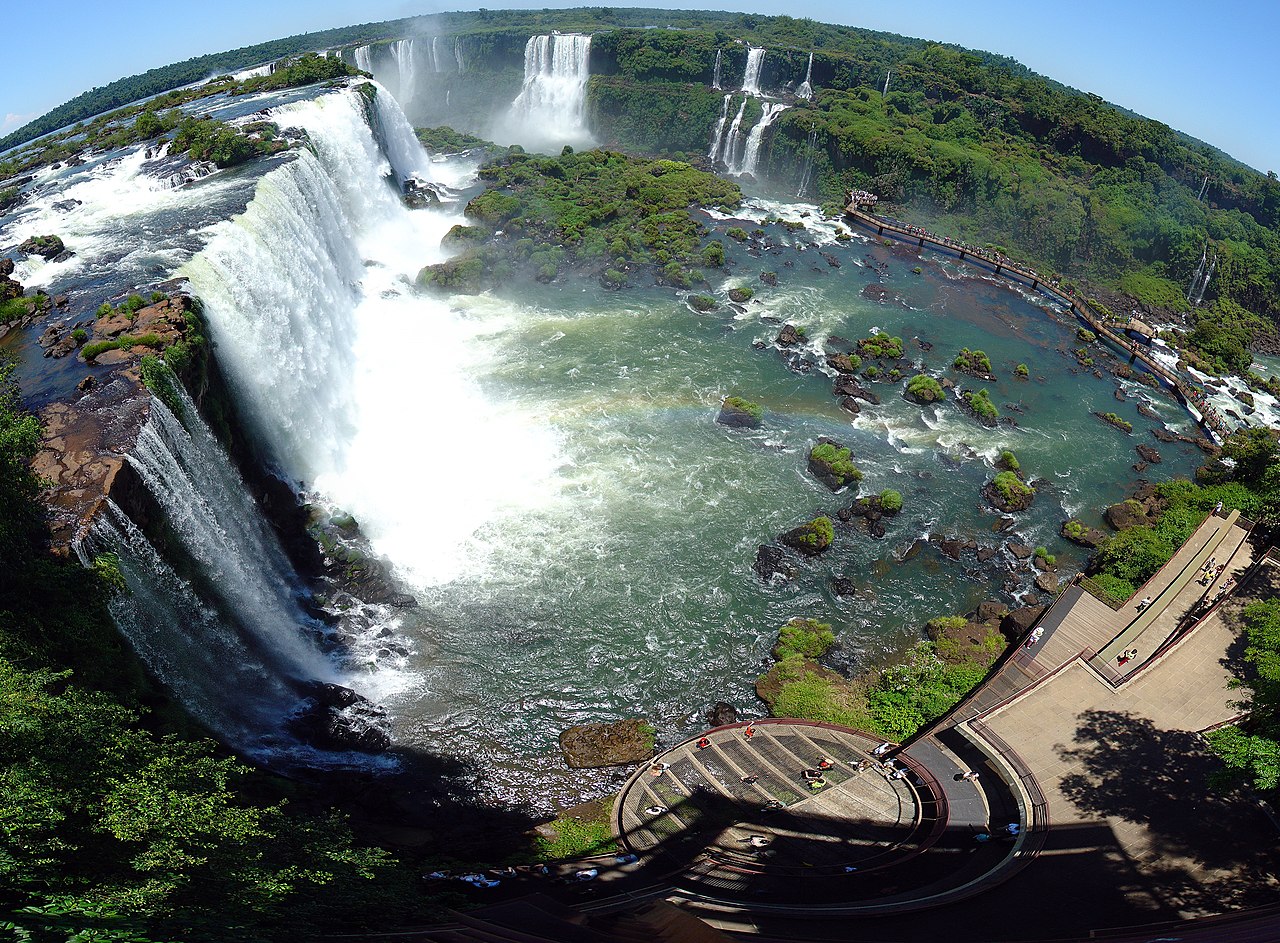




Leave A Comment